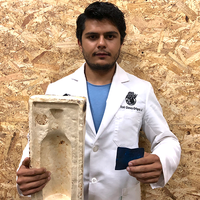Nanotechnology & materials
Letian Dou
A next-generation solar cell which is not only semi-transparent, but also “smart”

Europe
Francesca Santoro
Her 'solar plasters' could speed up the healing of burned skin

Europe
Henrik Hagemann
His industrial wastewater treatment system captures 10 times more pollutants than the current leader, in a more efficient and sustainable way

Latin America
Axel Gómez-Ortigoza
His new biological materials are more ecological and capable to replace their petroleum-derived counterparts

Global
Prineha Narang
Her research on materials at the smallest scale could lead to a new generation of technologies.
